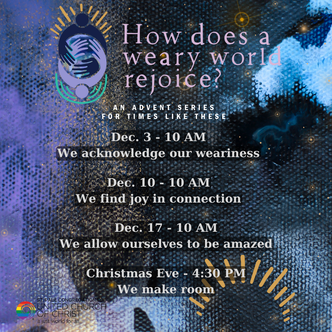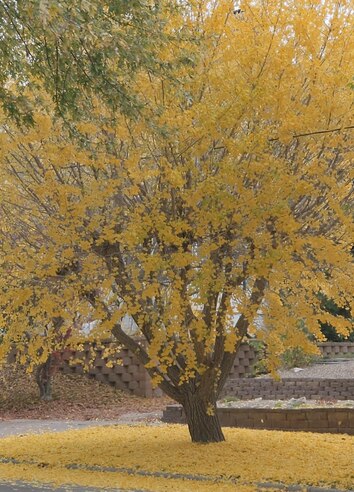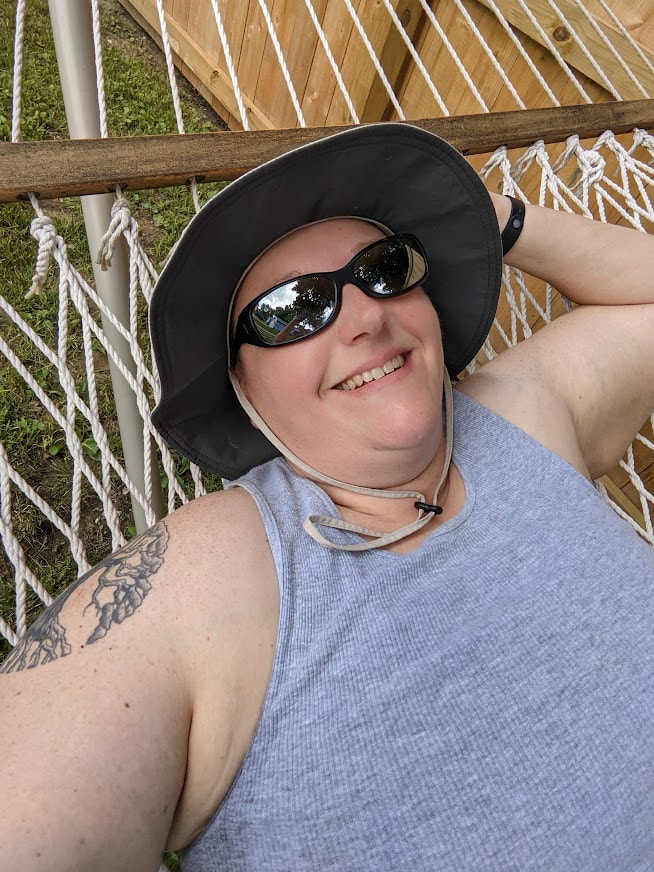 Over this long holiday weekend, I began a sourdough starter. A while back I had sent away for an heirloom sourdough culture in a San Francisco style, and this weekend I finally had time to get the culture going and growing so that, once I had enough sourdough starter, I could make some delicious sourdough bread. If you don’t know, sourdough bread isn’t made like other bread. It has no yeast. The rise in the sourdough bread comes through a fermentation process wherein equal parts room temperature liquid and equal parts flour are mixed with a culture. This activates the friendly bacteria and wild yeast that live in both the flour and the surrounding environment. Once these bacteria are activated, they begin to produce carbon dioxide bubbles, which make the bread rise. This also produces acids that lower the pH of the starter which, in turn, gives the bread its characteristic sour taste. This starter grows as it is fed, day after day, once per day. It ferments, it bubbles, it grows. More and more. And as it grows, so does the bubbling activity. Which, if you think about it, is pretty amazing given that these are just ordinary things–flour and water–that are helping the starter to grow. Not quickly. Not instantly like the packets of bread yeast we are used to, but over time and day by day. This Advent season, which will begin this Sunday, we will take our cues from the sourdough starter as we “feed” our hearts, minds, and spirits what they need to grow and bubble up joy even in a weary world. Each week we will answer the question, “How does a weary world rejoice?” with a new answer. These answers, you will find, are not “10 easy steps to get happy during the holidays,” and don’t require any special gadget or equipment. They simply invite us to feed our weary souls with what is already at hand–just ordinary things–so that, over time and day by day, we build and bubble our way to moments of joy–even in the midst of all of “this”...whatever “this” is for you during this particular season of life. The creators of our Advent series write, “As we move through our series, we hope to create space for acknowledging the weariness of the world while celebrating God’s love with great joy.” This is the hope here at St. Paul this Advent season, as we activate hope, peace, joy, and love among us and around us. Not because we have successfully faked our way to each of them, but because we have fed them, over time and day by day, until we–together and as individuals–can do nothing more than RISE. Learning to feed hope, peace, joy, and love with you, Pr. Melissa  This past weekend my family of origin got together for Thanksgiving. There were twenty-four of us present. My parents’ house was teeming with people, laughter, conversation, and the giggle and romping of children. There was food (SO MUCH FOOD) and connection and hugs for all who wanted them, not to mention the obligatory family picture my sister-in-law always makes sure that we get when we gather together. There were also things that went unsaid for the sake of keeping the peace. There was some tip-toeing around certain subjects. There were hushed disagreements and not-so-hushed judgments of others in attendance. There were children crying at different times, there were moments of palpable tension, and there was evidence of different people taking turns making themselves just a little smaller than usual to fit into their role in the family system. I name the wonderful aspects as well as the challenging ones because we so often don’t. Too often we only speak of the wonderful–as if that is the only way the holidays are supposed to happen. When many of us know all too well that there is never a purely wonderful holiday experience. There is always a challenge. Sometimes the challenges are just as I’ve named them. Other times the challenges present themselves differently–like spending your first holiday without someone you love. Or trying to make holiday plans after a relationship ends. Sometimes the challenge is trying to eek out any kind of holiday spirit at all because someone you love is ill or suffering in some way–or because you are ill or suffering in some way. Still other times, the challenge is that the family who loves you does not accept you or welcome you or your partner just as you are. Or the challenge is simply knowing that a holiday will be just another day for you because there is no one to spend the day with. Whatever the scenario is for each of us, challenges are present for us all. There is no silver lining to most of these challenges. Just because the calendar tells us it's a particular day, our disagreements don’t magically end. Our loved ones who have died don’t magically come back to life. Our relationships don’t magically mend, and we don’t magically have people to spend the holidays with or magically have people who love us and affirm us just as we are. Moving through holiday challenges isn’t magic..it’s a practice of coming home to yourself. Writer Jennifer Healey once wrote, “Before you cater to everyone else, ask yourself what it is YOU could do today to be at home within yourself. Leave it up to everyone else, and peace seems pie-in-the-sky. Through mindfulness and care, you take back your light. And that’s what coming home to yourself feels like: a peaceful strength, a sanctuary.” Perhaps if our energies are put toward anything this holiday season, they are best put toward coming home to ourselves. Maybe instead of killing ourselves trying to make this holiday season the “best one yet,” or spending what little we have in the tank trying to ignore the newly-empty place setting at the table, or trying to make all kinds of “magic” happen–with who we are, who is with us, or what expectations for the holiday season we hold, we could spend ourselves instead on creating a sanctuary within us. Maybe instead of looking for peace when everything is perfect, or when others around us love us perfectly, we could do the work of cultivating a peace within–a place we can retreat to when all of the challenges of the holidays come rushing in on us. So that whether our gatherings are a hot mess of judgements and family systems theory gone awry, or they are quiet times of shared grief or loneliness. No matter if all of the wonderful overshadows all of the challenges–NO MATTER WHAT–there is a peaceful space within you–just for you–a landing space to call home–even away from home. One simple practice we can all do is contemplative prayer. There are many ways to do this, but I will share one that’s helpful for me. Each morning and whenever I feel anxiety or dis-ease within me, I breathe in through my nose for a count of four, I hold that breath for a count of four, and then I breathe out that breath for a count of four. As I breathe in I say some phrase in my head that speaks to the day ahead or to the anxiety of the moment. As I breathe out I say another phrase–one that grounds me in truth. My phrases change over time, but the practice is the same–I just breathe–until I feel grounded in the truth and more distant from the challenges of the day ahead or the anxiety I feel. Sometimes it’s 2 minutes. Other times it’s 10 times that. So maybe this holiday season we can breathe together. Breathe in: The holidays pull me in so many different directions. Breathe out: I am my own sanctuary–no matter where I am or who I’m with. Practicing coming home to myself with you, Pr. Melissa  This past Saturday evening, I went to mass at the local Catholic church. I am not in the habit of attending mass (or any other church’s services for that matter), but Saturday was special: There was a baptism. A little girl connected to the St. Paul family of faith was getting baptized, and I didn’t want to miss the chance to be a part of speaking faithful promises over her and her family. So I went–to a building I’ve never been in, with many people I’ve never met, to pray prayers I don’t usually pray, and sing songs I don’t usually sing, and hear a message from a priest whom, until that night, I hadn’t yet had the opportunity to meet. Some of it felt familiar, like the Psalm chanting and the call and response rhythm that comes with rote prayers. While other parts felt disorienting, like navigating the missal in the pews, when to sit, when to stand, when some people were going to kneel, and what the appropriate response was to be. Perhaps most disorienting of all was attending a service that I wasn’t leading. There was no one looking to me for a message, or for guidance. I wouldn’t be receiving communion, let alone presiding over it. My participation in all of it was voluntary–a constant invitation to be present and to choose how (or if) I would enter each moment. And yet, even in my disorientation, God showed up…and in powerful ways. God showed up in the baby girl who was filled with such joy upon her baptism that she giggled, chattered, kicked her legs, and smiled all the way down and up the center aisle of the sanctuary held up high by the priest. God showed up in the cantor who led the psalm chant, raising her hand every time we were to offer our sung response. God showed up in the woman in the pew behind me, who noticed me struggling to find my way through the missal to participate in as much of the liturgy as I could, and offered me guidance over my left shoulder. God showed up during communion as I remained in my pew and watched others partake in a meal I could not. God showed up in my fumbles through responses that were worded just a little differently than I’m used to, and God showed up as I entered the songs. The truth is, when I was lost, God showed up. And when I knew exactly where I was, God showed up. And the only real difference for me on Saturday night was that I noticed. I noticed all of the ways that God is so close and so familiar and so constant that I so often miss it. Which leads me to believe that I didn’t necessarily need to be somewhere new to notice God’s nearness, but I did need to see in a new way. Marcel Proust once wrote, "The real voyage of discovery consists not in seeking new landscapes but in having new eyes." Perhaps our journey toward God is marked not by looking “out there somewhere” for what is Divine, perhaps our journey toward God is marked by noticing the Divine in what is already happening around us, in us, and through us. Don’t get me wrong, sometimes new landscapes are our pathways toward seeing with new eyes. And yet, constantly seeking new landscapes can keep us from noticing what is right before us–How God is showing up for us right where we are, just as we are. So, if you’re disoriented in your life right now, be encouraged. And if you know exactly where you are in your life right now, be encouraged. God is present. God is showing up. In a baby’s chatter, in familiar rhythms, in a stranger’s guidance, and at tables that weren’t set for you. God is present. God is showing up. God notices…do you? Learning to see with new eyes with you, Pr. Melissa  This morning, like every morning, I walked my dog Hank. The morning was cold and I was tired, so I was kind of moping about with my head down, thinking about how many other things I’d rather be doing than walking my dog (like sleeping). Taking in my first glances of Mother Nature as we stepped outside, I took note of all the death that was happening. A hard freeze had happened. Once vibrant plants were now drooping. The garden was barren. The bird bath was frozen. And the sky was a murky gray–autumn gray, as I call it. I sighed an “I miss summertime” sigh, and resigned myself to walking. Hank and I started our trek up the hill of our long driveway. My head was still down until something like yellow rain caught the corner of my eye. I looked up to see what in the world it was, and caught a glimpse of the most magnificent leaf-dropping I think I have ever witnessed in my life. The neighbor’s tree was dropping beautiful, golden leaves, as silent as a snowfall, and as quickly as a steady, cold, November rain. I stopped in my tracks. I had to try to capture the moment, so I took a quick video, and then a photograph. But pictures can’t do beauty like that justice. Finally, Hank looked up at me like, “Come on, Mom!”. I gave him a pat on the head, looked one more time at the tree, then kept walking. Fr. Richard Rohr says that beauty is evidence of a kind of harmony wherein something within us presents itself visually before us. We may not always even recognize that it is there inside us, yet when we see it before us, there is no question–the beauty in us recognizes the beauty before us. It is, to use the language of our faith, a kind of sacrament: An outward and visible sign of an internal grace. Or, in this case, an outward and visible sign of an internal beauty. Which means that on this morning when I couldn’t find anything beautiful in the midst of a cold and barren landscape. In the midst of grief over the season that had passed. In the midst of fatigue and maybe just a little sadness that never really leaves. In the midst of “to-do” lists that never end, and responsibilities that I take on or that others place upon me. In the midst of all that isn’t necessarily beautiful or lovely, beauty was still there. Even in that space in which I felt beauty had no business. It had never left despite all of my feelings at the moment. That tree was evidence of a harmony that I–that we–so easily forget. The harmony of the forgotten beauty within us that is made manifest beyond us. To remind us that all is not lost. That there is something holy beyond the limitations of our current experiences. That despite how lonely or isolated or lost we might feel, we carry within us an ancient connection–a sweet communion–to remind us who we are–who we really are: Vessels of beauty and grace and love beyond measure. Even when the landscape offers only evidence to the contrary. Learning to look for the outward and visible signs of what is internal and eternal with you, Pr. Melissa |
Rev. Melissa Sternhagen
Rev. Melissa Sternhagen was called as the pastor of St. Paul Congregational UCC in June of 2020. Prior to her call to St. Paul, Pr. Melissa worked as a hospice chaplain in the Ames, IA area, following pastorates at rural churches in Central Iowa and Southern Illinois. Pr. Melissa is a second-career pastor with a background in agribusiness and production & supply operations. She received her M.Div. from Eden Theological Seminary in St. Louis, MO, and holds a MA Ed. in Adult Education and Training, and a BA in Organizational Communications. Archives
July 2024
Categories |

 RSS Feed
RSS Feed
